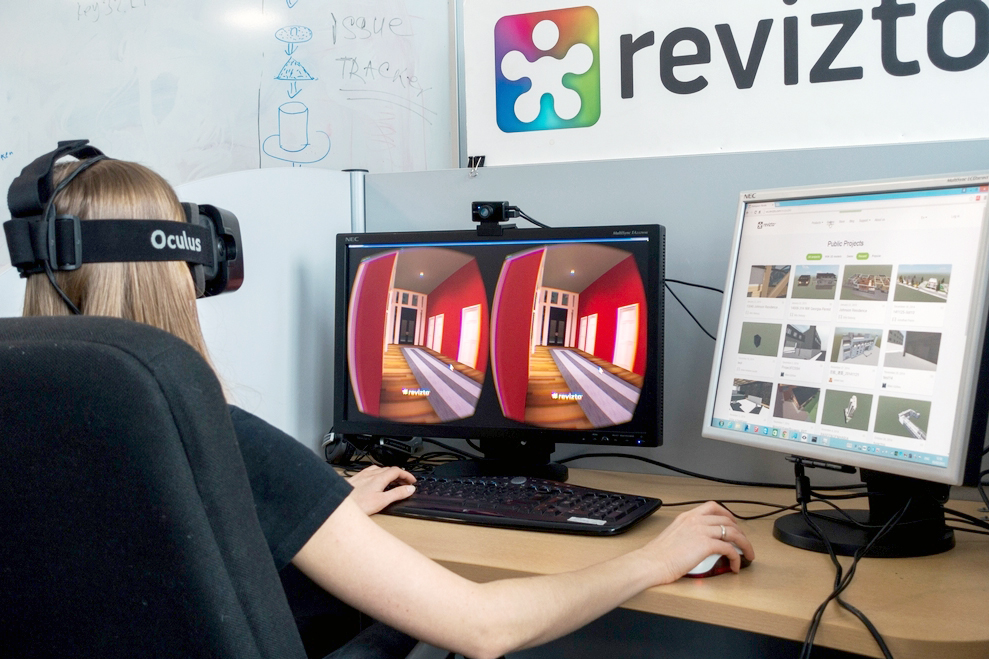To help clients and non-visual thinkers envision a space that has yet to be built, architects have used physical and virtual models, increasingly realistic renderings, and fly-through animations. Software developer Vizerra and distributor 3DreamTeam Co., based in San Francisco, recently gave architects another presentation tool: virtual reality.
Version 3.2 of Revizto (Vizerra, price varies) a suite of apps that turns BIM and CAD models created in Trimble SketchUp, Autodesk Revit, AutoCAD, and Navisworks into navigable 3D environments, now supports the Oculus Rift DK2 (Development Kit 2) headset. The software developer claims that Revizto is the first non-game application in the AEC industry to support virtual reality technology. “[O]ur users—architects, building designers, BIM managers—[are among the first to] get this privilege to step inside their architectural projects and explore new worlds of their 3D models like never before,” said Arman Gukasyan, Revizto CEO and founder, in a press release.
After plugging the DK2 headset, which weighs in at 0.97
pounds, into a compatible PC or Mac device and running the free Revizto Viewer, users will find themselves
transported into their project’s 3D model. Users can scan the space by moving
their heads, but must use an old-fashioned mouse to advance down corridors and
into different rooms. In other words, they can’t nod or think their way through
the building (yet).
Besides Revizto’s plug-and-play technology, other services and tools that convert building models into immersive virtual-reality
experiences are available. ArchVirtual, in Oregon, Wis., specializes in turning
architectural drawings and models into a real-time, 3D-gaming engine for the
Oculus Rift. IrisVR, located in Burlington, Vt., is developing an
eponymous app for the AEC industry and is now looking for beta testers. And
Digital Physical has been working on Spacemaker VR,
which was anticipated for release in 2014, but has been quiet recently.
Without trying the technology firsthand, it’s hard to say whether virtual reality makes navigating a digital architectural model significantly more compelling. But as virtual reality headsets and software become more available and affordable, more architects will have the option to use it as a marketing tool, if not a conversation starter.
Note: This article has been updated since first publication.
